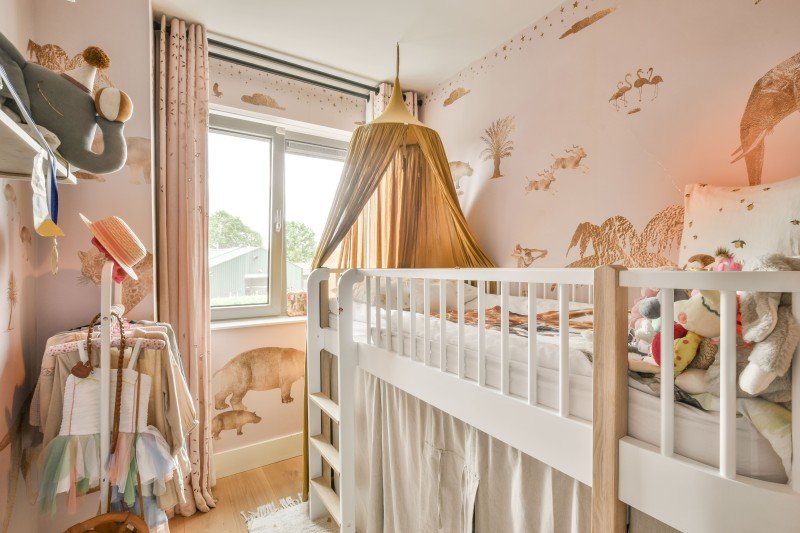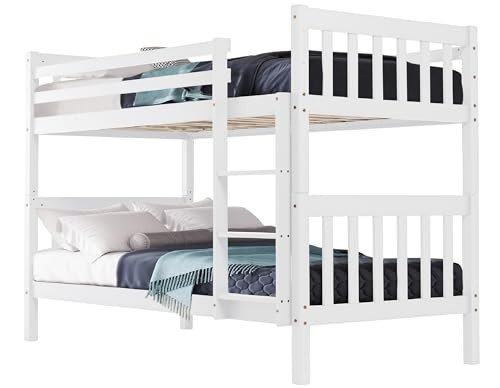
Exploring Bunk Beds: A Comprehensive Guide
Bunk beds have actually long been a staple in children's bed rooms, dorms, and even homes with minimal space. Not just do they offer a practical sleeping service, however they also create an enjoyable and imaginative environment for children and a great space-saver for adults and households. This article will explore whatever you need to learn about bunk beds, from types and materials to security ideas and purchasing suggestions.
Tabulation
- Kinds Of Bunk Beds
- Standard Bunk Beds
- Loft Beds
- Triple Bunk Beds
- L-Shaped Bunk Beds
- Product Options
- Wood
- Metal
- Safety Considerations
- Purchasing Guide
- FAQs
Kinds Of Bunk Beds
Bunk beds can be found in various styles to match various requirements and preferences. Here's a breakdown of the most typical types:
Conventional Bunk Beds
Traditional Bunks; Https://Amizuniesboutiquevilla.Homestaybuddy.In/, typically include 2 beds stacked vertically on top of one another. These beds are ideal for brother or sisters sharing a room or for making the most of sleeping space in guest spaces.
Loft Beds
Loft beds stand similarly to traditional bunk beds but do not have a lower sleeping area. Rather, they often integrate a desk or seating area below, making them a great option for small rooms needing multifunctionality.
Triple Bunk Beds
Triple bunk beds are created for three occupants, with beds stacked in a three-tier setup. These are less typical however can be a fun solution for big families or sleepovers.
L-Shaped Bunk Beds
With one bed placed horizontally and the other vertically, L-shaped bunk beds are frequently equipped with additional functions such as desks or storage drawers and can complement corner areas in a room.
Comparison of Bunk Bed Types
| Bed Type | Perfect Use | Description |
|---|---|---|
| Conventional | Shared bedrooms or guest spaces | 2 beds stacked vertically |
| Loft | Little rooms requiring multi-purpose space | Upper bed with open space underneath |
| Triple | Big families or slumber parties | Three beds stacked vertically |
| L-Shaped | Corner or versatile spaces | A combination of vertical and horizontal beds |
Product Options
Bunk beds are manufactured from various products, with wood and metal being the most common. Each material has its advantages and disadvantages.
Wood
- Resilience: Generally robust and can stand up to years of usage.
- Visual Appeal: Offers a classic appearance that can mix with various decors.
- Weight Capacity: Typically stronger; can support much heavier weights.
- Disadvantages: May be more pricey than metal choices and can be susceptible to scratches.
Metal
- Durability: Generally light-weight and easy to move however still tough.
- Modern Design: Often can be found in smooth designs, making it appealing for modern spaces.
- Cost-efficient: Usually less pricey than wooden choices.
- Downsides: Can be cold to the touch in winters and may not have the exact same aesthetic appeal for some buyers.
Security Considerations
When it concerns bunk beds, security can not be neglected. Here are crucial safety suggestions to remember:
- Guardrails: Ensure that the leading bunk has guardrails on both sides to prevent falls.
- Strong Construction: Check for a strong build and durable materials to withstand weight and movement.
- Weight Limit: Adhere to the producer's weight limit for both the upper and lower bunks.
- Ladder Design: Choose bunks with a safe, easy-to-climb ladder and avoid any sharp edges or rungs.
- Age Restrictions: Most makers recommend that kids under the age of 6 should not sleep in the upper bunk.
Buying Guide
When shopping for bunk beds, consider the list below factors to find the very best suitable for your requirements:
- Space Availability: Measure the space size and ceiling height, ensuring there is sufficient space for the leading bunk.
- Bed Size: Decide in between twin, full, or bigger sizes based upon your needs and the size of the room.
- Design Preference: Consider the general design of the bedroom to find an appropriate style.
- Ease of Setup: Look for a bunk bed that is straightforward to put together.
- Spending plan: Bunk beds can be found in various rate varieties, so identify a spending plan before starting your search.
Frequently asked questions
1. What is the recommended age for kids to sleep on the top bunk?
Kids aged six and older are typically recommended to sleep on the leading bunk to lessen the threat of falls.
2. How can I make my bunk bed much safer?
To improve security, make sure guardrails are properly set up and examine that the bed is positioned on a flat surface area. Additionally, encourage kids to use the ladder carefully.
3. Can I transform a bunk bed into two different beds?
Lots of bunk beds are designed to be convertible. Inspect the producer's specs for convertibility features.
4. What devices are readily available for bunk beds?
Typical devices include bed linens, storage drawers, staircases instead of ladders, and tented canopies for an enjoyable visual appeal.
5. How do I maintain my bunk bed?
Regular checks for loose screws or structural integrity can help make sure security. Dust the bed regularly and tidy spills quickly to keep the products in good condition.
Bunk beds are flexible and a space-efficient service for various living situations, from children's spaces to guest accommodations. With many styles and materials readily available, potential purchasers have a wealth of options to consider, ensuring a combination of usefulness and aesthetics. By focusing on security and following the tips laid out in this guide, people can find the best bunk bed that matches their space and lifestyle, all while creating a pleasurable sleeping environment.



